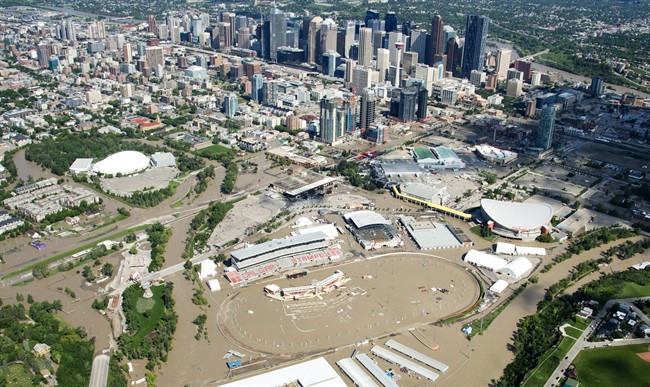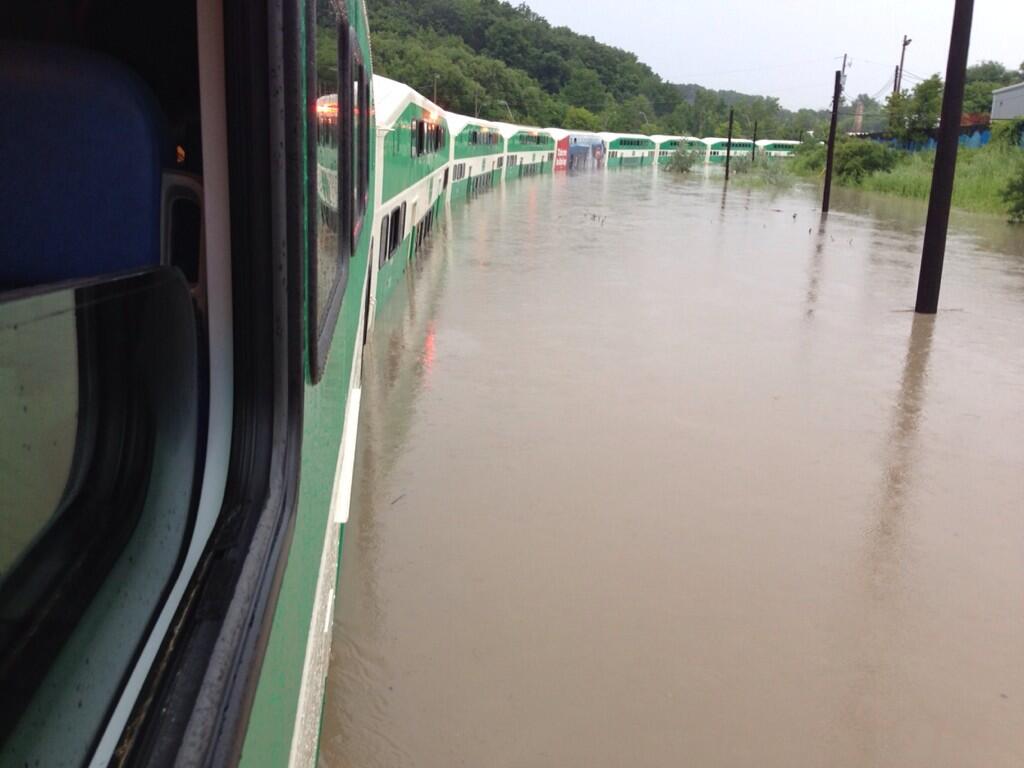TORONTO – The World Meteorological Organization has found that from 2001 to 2010, the world experienced “unprecedented high-impact climate extremes.”

That may not come as a surprise to Canadians. With the floods experienced by Alberta in June, Toronto’s record-breaking rainfall on Monday and a winter that seemed to stretch on forever across the country, Canadians know that the weather they’re seeing isn’t “typical.”
The WMO found that for the decade, the average land and ocean-surface temperature was 14.47°C, 0.47°C higher than the 1967 to 1990 average. It was 0.21°C higher than the 1991 to 2000 average.
The U.S. National Oceanic and Atmospheric Administration found that the decade was also the most active since 1855 in terms of tropical cyclones in the North Atlantic Basin.
As for precipitation and floods — something that has widely affected Canada — most parts of the world received higher-than-normal precipitation. Eastern Canada, as well as the Eastern United States and parts of Europe and Central Asia were “particularly wet.”
Canadians can expect more extreme weather like flooding, tornadoes and other wind events.

How we can prepare
Climate change means that cities need to develop infrastructure to support the increase in severe weather events, according to Dr. Blair Feltmate, a professor at the Faculty of Environment at the University of Waterloo.
“Both the frequency and magnitude of extreme weather events…will continue to happen,” he said.
“Overall extreme weather events are on the rise, particularly in the form of the high-duration intensity rainfall events, along the events we’ve seen in Calgary and Toronto and other places.”
Feltmate is the head of the Climate Change Action Adaptation Project, which seeks to develop and promote methods that both cities and individuals can undertake in order to better prepare themselves for the increase in severe weather events.
One way is to re-examine floodplains.
“We need to develop up-to-date floodplain maps,” Feltmate said. Most floodplain maps around the country are 20 to 40 years old, he said.
- Ont. First Nation calls for chemical plant to be shut down amid ‘dangerously high’ benzene levels
- Ottawa looks to launch national flood insurance program within 12 months
- Ecuador rations power, declares emergency as drought limits hydro output
- Nova Scotia scraps spring bear hunt idea, public ‘very divided’ on issue
There are a number of ways that homeowners can protect themselves from the costly repercussions of severe weather like flooding. For one, Feltmate said, they should research the area when purchasing a home, to ensure that they are not going to live in a floodplain. He said cities don’t take much responsibility for where they build and that their focus is on generating money from taxes.
Another method would be the installation of a backwater valve. These valves prevent floodwaters from rising into basements.
Feltmate said that all builders should automatically include that when constructing new homes. The cost would be $300 as opposed to $3000 to retrofit a home. Still, he added, even the $3000 would save homeowners headaches and higher costs due to possible flooding.
The City of Toronto provides a subsidy of up to $3,200 to owners of single-family, duplex and triplex homes in order to assist homeowners with the retrofit.
However, cities can also put into place means that would decrease the burden put upon its residents during severe weather, such a floods.
Breakwalls can be installed in places, such as along the Don Valley Expressway, the Toronto highway that has seen two floods in two months, forcing its closure and stranding of motorists.
There is also a development of a parking lot that is comprised of both asphalt and grass. The permeable surface of the grass would allow for water absorption. Though the initial set-up or retrofit might be costly, Feltmate said that structures such as these would pay for themselves down the line, saving a city millions in insurance payouts and rebuilding.
Wetlands in and around towns and cities should also be preserved, as they help absorb water and recharge groundwater, as well as creating biodiversity. Bioswales, a type of vegetated channel or drainage ditch that allows for stormwater runoff to be discharged and cleansed, are another solution cities could employ.
The impacts of severe weather
Though there are ways we can prepare for floods, we may not be able to prepare for all types of weather such as tornadoes, drought, fires and wind events.
Globally, more than 370,000 people died due to extreme weather and climate conditions, which included heat waves, cold spells, drought storms and floods during the decade from 2001-2010. This was a full 20 per cent higher than the decade spanning 1991 to 2000. Most of the deaths were due to a heat wave in Europe in 2003 and one in 2010 in Russia.
Though that number has increased, deaths due to storms were actually down 16 per cent, and there was also a 43 per cent decline due solely to floods. The report cites better preparedness and early warning as being some of the main reasons for the declines.
“What we’re seeing is only really just the precursor…of what we see coming our way,” said David Phillips, Senior Climatologist with Environment Canada.
Phillips wonders what lies ahead.
“When you think about the world warming up by about 3/4 of a degree in the last 100 years or so, what happens when we warm up 2 degrees more in the next 30 or 40 years?”
–with files from Allison Vuchnich



Comments